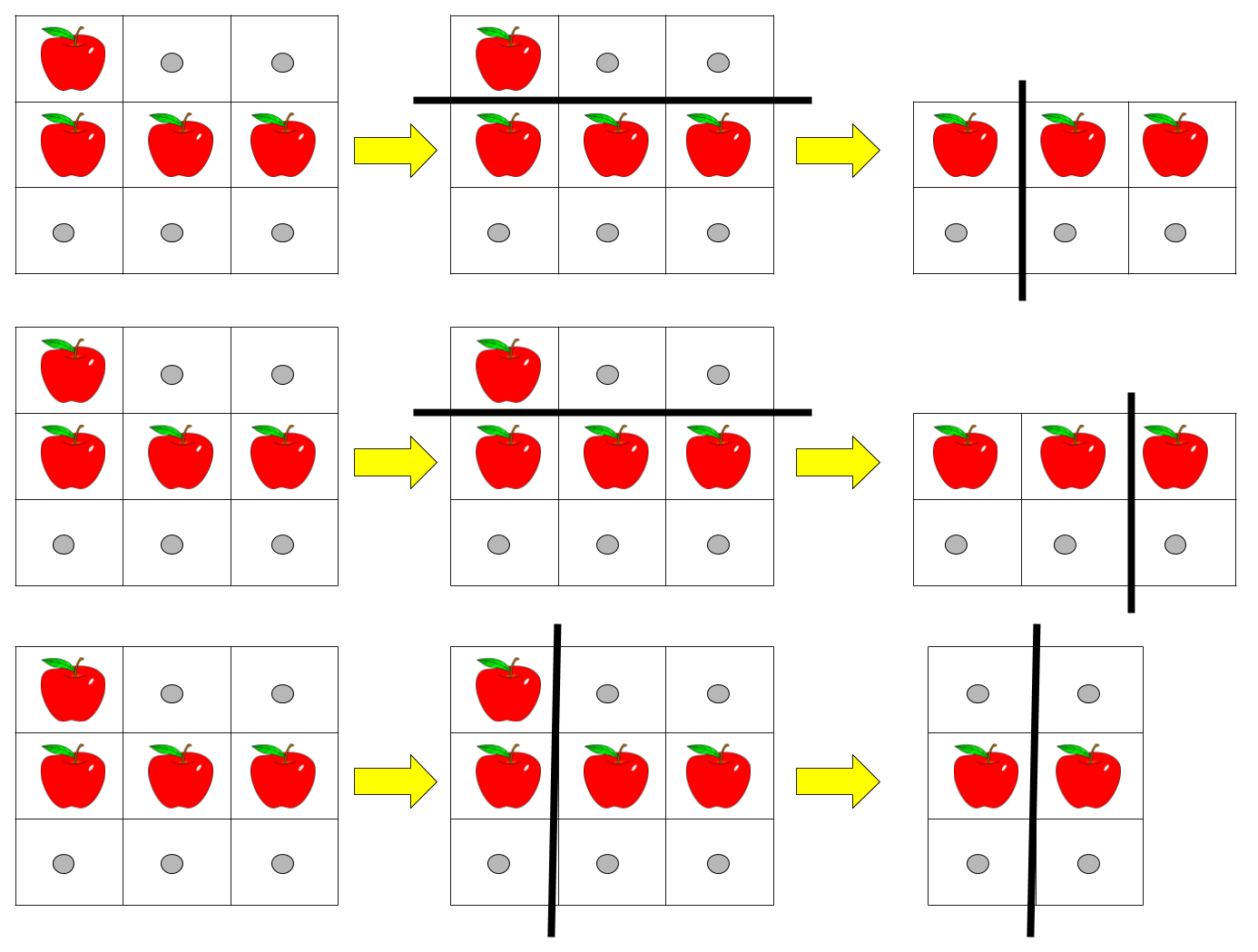- {x}
- Destination City
- Check If All 1's Are at Least Length K Places Away
- Longest Continuous Subarray With Absolute Diff Less Than or Equal to Limit
- Find the Kth Smallest Sum of a Matrix With Sorted Rows
- Evaluate Boolean Expression
- Build an Array With Stack Operations
- Count Triplets That Can Form Two Arrays of Equal XOR
- Minimum Time to Collect All Apples in a Tree
- Number of Ways of Cutting a Pizza
- Apples & Oranges
- Consecutive Characters
- Simplified Fractions
- Count Good Nodes in Binary Tree
- Form Largest Integer With Digits That Add up to Target
- Number of Students Doing Homework at a Given Time
- Rearrange Words in a Sentence
- People Whose List of Favorite Companies Is Not a Subset of Another List
- Read More...

Number of Ways of Cutting a Pizza
Given a rectangular pizza represented as a rows x cols matrix containing the following characters: 'A' (an apple) and '.' (empty cell) and given the integer k. You have to cut the pizza into k pieces using k-1 cuts.
For each cut you choose the direction: vertical or horizontal, then you choose a cut position at the cell boundary and cut the pizza into two pieces. If you cut the pizza vertically, give the left part of the pizza to a person. If you cut the pizza horizontally, give the upper part of the pizza to a person. Give the last piece of pizza to the last person.
Return the number of ways of cutting the pizza such that each piece contains at least one apple. Since the answer can be a huge number, return this modulo 10^9 + 7.
Example 1:

Input: pizza = ["A..","AAA","..."], k = 3 Output: 3 Explanation: The figure above shows the three ways to cut the pizza. Note that pieces must contain at least one apple.
Example 2:
Input: pizza = ["A..","AA.","..."], k = 3 Output: 1
Example 3:
Input: pizza = ["A..","A..","..."], k = 1 Output: 1
Constraints:
1 <= rows, cols <= 50rows == pizza.lengthcols == pizza[i].length1 <= k <= 10pizzaconsists of characters'A'and'.'only.
1444. Number of Ways of Cutting a Pizza
This problem asks to find the number of ways to cut a pizza into k pieces such that each piece contains at least one apple. The pizza is represented as a matrix of 'A' (apple) and '.' (empty). Cuts can be horizontal or vertical.
Approach: 2D Prefix Sum + Memoized DFS
The solution uses a dynamic programming approach with memoization to efficiently explore the search space. Here's a breakdown:
-
2D Prefix Sum: A crucial optimization is pre-computing a 2D prefix sum array
s.s[i][j]stores the total number of apples in the sub-rectangle from (0, 0) to (i, j). This allows for O(1) computation of the number of apples in any sub-rectangle. -
Memoized Depth-First Search (DFS): The core logic is a recursive DFS function
dfs(i, j, k):i,j: Top-left coordinates of the current pizza piece being considered.k: The number of cuts remaining.
The base cases are:
k == 0: No more cuts needed. Check if the current piece has at least one apple (s[m][n] - s[i][n] - s[m][j] + s[i][j] > 0). If yes, return 1 (one way); otherwise, return 0.- Memoization: If
dfs(i, j, k)has already been computed, return the stored value.
The recursive step explores two possibilities for each cut:
- Horizontal Cut: Iterate through possible horizontal cut positions
x(i < x < m). Check if the top piece (0,0 to x,n) contains at least one apple. If so, recursively calldfs(x, j, k - 1)for the bottom piece and add the result to the count. - Vertical Cut: Iterate through possible vertical cut positions
y(j < y < n). Check if the left piece (0,0 to m,y) contains at least one apple. If so, recursively calldfs(i, y, k - 1)for the right piece and add the result to the count.
-
Result: The final answer is
dfs(0, 0, k - 1), representing the number of ways to cut the entire pizza intokpieces withk-1cuts. The modulo operation (% mod) is used to handle potential large numbers.
Time and Space Complexity
- Time Complexity: O(m * n * k * (m + n)). The DFS explores all possible cut combinations. The prefix sum calculation is O(m * n).
- Space Complexity: O(m * n * k). This is dominated by the memoization array
f.
Code (Python)
class Solution:
def ways(self, pizza: List[str], k: int) -> int:
mod = 10**9 + 7
m, n = len(pizza), len(pizza[0])
s = [[0] * (n + 1) for _ in range(m + 1)] # Prefix sum array
for i in range(1, m + 1):
for j in range(1, n + 1):
s[i][j] = s[i - 1][j] + s[i][j - 1] - s[i - 1][j - 1] + (pizza[i - 1][j - 1] == 'A')
@cache
def dfs(i, j, k): # Memoized DFS
if k == 0:
return int(s[m][n] - s[i][n] - s[m][j] + s[i][j] > 0)
ans = 0
for x in range(i + 1, m):
if s[x][n] - s[i][n] - s[x][j] + s[i][j] > 0:
ans = (ans + dfs(x, j, k - 1)) % mod
for y in range(j + 1, n):
if s[m][y] - s[i][y] - s[m][j] + s[i][j] > 0:
ans = (ans + dfs(i, y, k - 1)) % mod
return ans
return dfs(0, 0, k - 1)
The code in other languages (Java, C++, Go, TypeScript) follows a very similar structure, differing only in syntax and data structure implementations. The core algorithm remains the same.